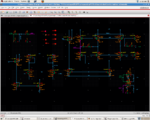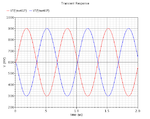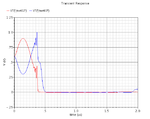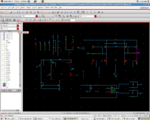nisha gupta
Member level 4
- Joined
- May 22, 2012
- Messages
- 71
- Helped
- 0
- Reputation
- 0
- Reaction score
- 0
- Trophy points
- 1,286
- Location
- Hyderabad, Andhra Pradesh, India
- Activity points
- 1,755
hi
i have designed a transimpedance amplifier having UGB 1GHZ and gain 60dB in AC analysis. but in transient analysis it is giving at output sin wave only upto 1.5MHz. after that frequency some sandom signal is coming why so?
i have designed a transimpedance amplifier having UGB 1GHZ and gain 60dB in AC analysis. but in transient analysis it is giving at output sin wave only upto 1.5MHz. after that frequency some sandom signal is coming why so?



